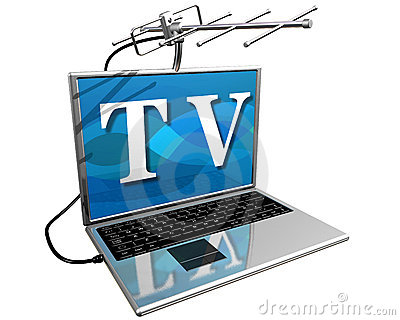Today people’s TV watching habits are changing. Most notably, people are no longer being restricted by watching TV only on their box. The progression is mianly tending towards using the web as a TV medium. Spark’s Lightbox service is the most recent growth in this area.
Here are five things you should know about watching TV on the Web:
1. HDMI
HDMI or High-Definition Multimedia Interface or, as I like to call it, a plug. There are other ways to plug your device into your TV, but for me you can’t beat the old straight-up-the-guts approach. Many people use an old computer that sits by the TV with the sole purpose of providing programming from the www, be it by torrent or streaming. So before you throw out that old laptop, think on.
I’ve been through a few MacBooks over the years and each one has required that I buy a different adapter to get net content on to the big screen, some costing hundreds of dollars, so if you are looking at buying a computer in the near future, get one with an HDMI output built in. But whatever device you are using there will be an adaptor that will allow you to plug into the HDMI on your TV or at least the RCA inputs (the red, white and yellow ones) if you have a really old one. But however daunting all this sounds, remember there is always a way, or at least a painfully lengthy post about it, ending in a sarcastic “Thanks for nothing Apple/Microsoft”.
2. The Switcher
As with many hi-tech issues it’s often a small, inexpensive gadget that will be your best friend. One of my bffs is my HDMI Switcher.
Fancy new TVs have 2 or 3 HDMI inputs but older ones, like mine, only have one, which you probably have hooked up to your Sky, Freeview, or Xbox. But never fear, these things are cheap (as low as $7.95) and will give you multiple inputs.
3. Apple TV
It’s all very well to plug your device in via a plug but Wi-Fi is where it’s at these days. No need to crawl around the floor swearing, just sit on the sofa and stream whatever is on the screen of your iPhone, iPad or MacBook, or even a trusty old PC.
The Apple TV box is still the best one out there. It sits next to your TV and is plugged in via HDMI. (Second-hand ones with component inputs are readily available.)
At $149 it’s a fairly cheap way to watch, but built-in options, like Netflix, are limited in New Zealand. Of course, you can always pretend you don’t live here (see below). For non-Apple owners, boxes like the Roku 3 are well worth a look.
Pros: Has a remote. Supports IOS 6 and up, Windows XP and higher, Mac OS X 10.3.9, Windows 7 up and Mac OS 10.7 and up.
Cons: Not as good an experience for PC or Android users, though there are workarounds via third-party apps.
4. Google Chromecast
It’s a tiny “dongle” that looks like a USB key. It mates with your TV via the HDMI and makes sweet love with your Wi-Fi network. How cheap? From as low as $60. Put simply, you can plug the Chromecast into a TV with HDMI and be watching YouTube in two minutes flat, if all goes well.
Pros: Cheap as. Very portable. Works well with Quickflix. Supports Android 2.3 and higher, Chrome OS as well as Windows 7 up and Mac OS 10.7 and up.
Cons: Limited functionality compared to the Apple TV. No remote, but you can use your device as one. Needs to be powered from USB.
5. ‘Leave’ the country
Thanks to the likes of New Zealand-friendly Quickflix and now Lightbox, most of us now have more than enough to be getting on with when it comes to streaming. But to really tap into what is available you will need to pretend you don’t live in New Zealand. By the use of a VPN (Virtual Private Network) you can wipe your online thumbprint and subscribe to things like Netflix, watch the tempting offerings on the BBC iPlayer, and basically feast on the latest and greatest, much of which is blocked for Kiwis (even BBC content on YouTube is often blocked to us). Local internet provider Slingshot provides this service to their customers, which lead to their ads being pulled from SKY, TV3, and TVNZ. Initially the company pretended the service was for people who had ‘visitors from overseas’ but recently they fessed up with general manager Taryn Hamilton telling the Herald, “No beating around the bush. This is to watch Netflix, this is to watch BBC iPlayer, this is to watch Hulu, this is to watch Amazon Prime.” Other internet providers like Orcon provide detailed instructions on how to get a VPN. But bear in mind it will cost you between $60 and $100 a year and you will need to get a UK or US billing address, which is easily done through New Zealand Post’s “YouShop” page.
Curated from NZ herald


